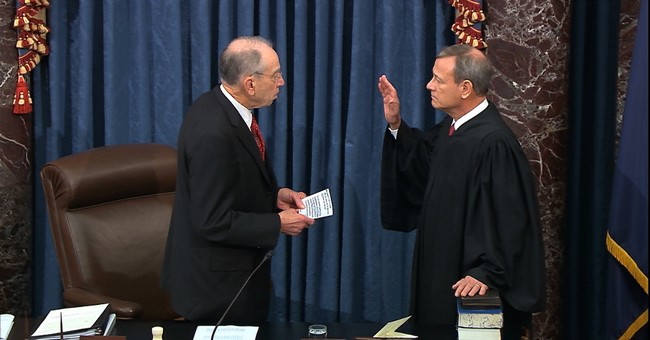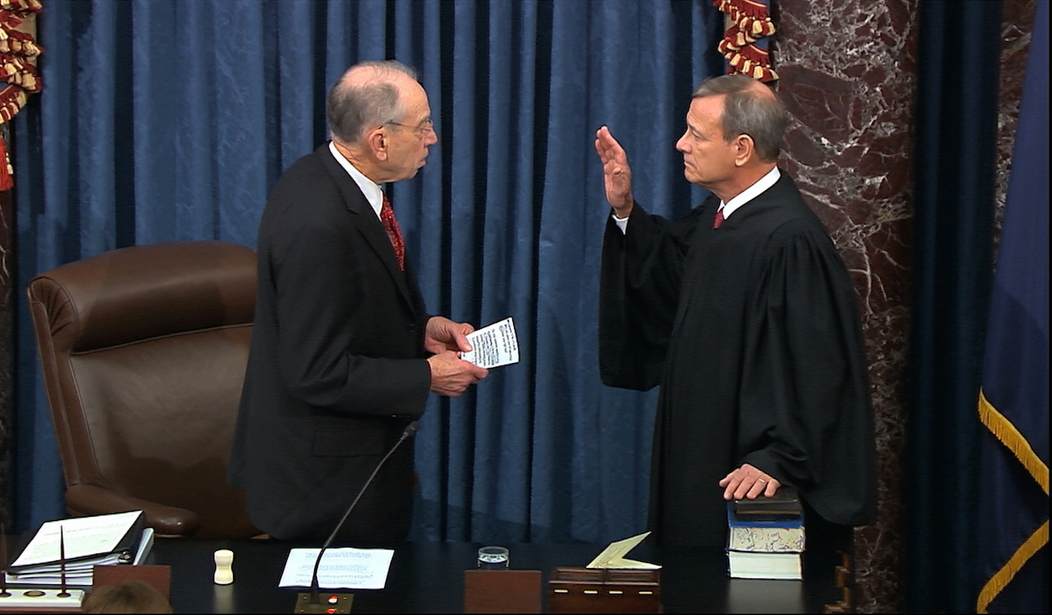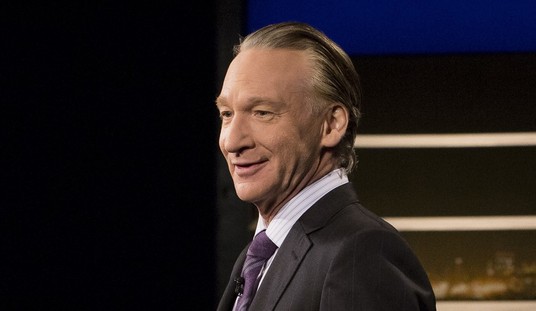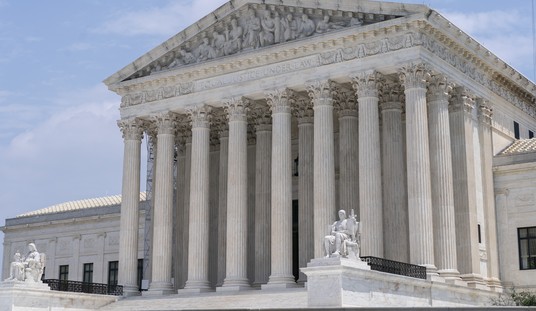
Many pundits would probably argue that the headline for this story is wrong. It is true, after all, that in both cases the Supreme Court upheld that idea that the issuance of subpoenas was lawful — by Congressional Committees and by the Manhattan District Attorney — for personal financial records relating to Pres. Trump, family members, and various business entities associated with him. Or did they?
The “doomsayers” who oppose Pres. Trump in these cases point out that in both instances the Court rejected the claim of “absolute immunity” for a President, which was an argument put forth by the President’s attorneys but not embraced by the Solicitor General of the United States. They point out that in both cases the Court upheld the proposition that subpoenas from Congress and a local prosecutor could be issued to a President for personal financial records. But both cases were sent back to the lower courts for further consideration of issues which the Supreme Court said were not sufficiently considered by those courts in reaching their decisions on the validity of the subpoenas issued. The nature of those issues are such that it would be quite easy for the Court to later turn around and invalidate those same subpoenas based on further information gathered as part of such lower court consideration.
Beyond the actual outcome of the two cases, I am once again drawn to the manner in which the votes lined up and how I read the “tea leaves” in connection with the votes of the Justices. For me, this is the fourth time on controversial outcomes where I see Chief Justice Roberts having “engineered” the vote in a way that had a significant impact on the substance of the outcome.
Both subpoena cases announced today ended up with 7-2 outcomes, and the Chief Justice wrote both opinions. The dissenting votes in each case were Justices Alito and Thomas. The only difference between the two outcomes is that in the Manhattan DA matter, Justice Kavanaugh wrote a Concurring Opinion which was joined by Justice Gorsuch.
Most readers are probably unaware of the mechanics of the Supreme Court by which cases are considered, decided, and opinions written. Every case which the Court agrees to decide is fully briefed by the staff of each individual Justice in the weeks and months ahead of the oral argument. On the day of the oral argument the positions of the individual Justices on the ultimate outcome of the case might be somewhat well understood behind the scenes, and it is generally rare that anything which is said during the oral argument has any meaningful influence on how a Justice votes. The “sparring” that is seen between Justices during oral argument is a reflection of a “back and forth” that has already played out some in chambers.
Twice a week the Justices meet in Conference while the Court is in session. On Wednesday they meet to discuss and vote on cases heard on Monday. On Friday they meet to discuss and vote on cases heard on Tuesday and Wednesday. Each Justice is given a chance to state their views on each case with the Chief Justice going first, followed by the other Justices in order of seniority, with Justice Kavanaugh going last. After the discussion ends, a vote on the outcome is taken. If the Chief Justice is voting in the majority, then the Chief Justice decides which Justice in the majority shall write the opinion of the Court. If the Chief Justice has voted with the minority, then the senior most Justice voting with the majority decides who will write the opinion of the court. This is probably the MOST significant feature of the role of the Chief Justice, as assignment of the opinion has a huge impact on what the Court actually says is the outcome of the case beyond the mere lineup of the votes.
Since 1789 there have been only 17 Chief Justices of the Supreme Court. The shortest tenure was 138 days (John Rutledge, 2nd Chief), and the longest tenure was 34 years and 152 days (John Marshall, 4th Chief). I saw a statistic on Twitter earlier — I have not verified it myself — that the Chief Justice voted in the majority on every 5-4 or 5-3 decision in the term (except one), meaning he assigned the opinion in every case where there was a sharp division among the Justices on the outcome.
Chief Justice Roberts voted in the majority in both subpoena cases decided today, and he assigned both opinions to himself. I believe it is likely that there were actually five votes in each case to “reject” the subpoenas — just not on the “absolute immunity” grounds that were argued by Pres. Trump’s personal attorneys in each case. As the opinion in the Manhattan DA subpoena case made clear:
The arguments presented here and in the Court of Appeals were limited to absolute immunity and heightened need. The Court of Appeals, however, has directed that the case be returned to the District Court, where the President may raise further arguments as appropriate.
This leaves open the door for the five conservatives to hear this case again based on the “further arguments” that will be made by Pres. Trump in the lower courts — assuming there is any interest by Manhattan DA Vance to do so since it is unlikely that anything will be produced to him ahead of the 2020 election. The Court already stayed enforcement of the subpoena in the lower courts until it could hear this case — there is no reason to believe that that the Court would not do the same again if the lower courts again rule after hearing “further arguments” that the subpoenas are valid and the documents must be produced.
Because the votes were 7-2, Roberts wrote opinions with sufficiently “squishy” language that promised nothing in the future, but nevertheless persuaded all four liberal justices to join them. It is interesting to me that none of the four wrote a concurrence that more forcefully argued for the validity of subpoenas based on their current status. Not only did they all agree with an outcome that returned the issue to the lower courts for further proceedings, they all signed on to an opinion by the Chief Justice which said between the lines: “Look, the Court recognizes the political games being played here and we have factored that into our outcome.”
The Manhattan DA opinion leaves open to Pres. Trump the option of returning to federal court in the future to contest efforts by state and local prosecutors to seek access to records from third parties. Any and every such effort is going to end up in federal court with the state or local prosecutor having to run a gauntlet of the “tests” that the Supreme Court has suggested could warrant federal intervention in order to protect the institution of the Presidency. While it did not invalidate the Manhattan DA’s subpoenas, the opinion creates a very narrow window through which such subpoenas must fit in order to not be blocked in the future. Whether the Manhattan DA’s subpoenas fit through that window is an issue kicked down the road.
In the Congressional subpoena case, CJ Roberts took a similar approach. He voted in the majority and then wrote an opinion that paid “lip service” to the concept that Congress has the power based on legislative necessity to issue subpoenas about a President’s private affairs in order to gather information. He gained seven votes for his opinion by doing so. But this opinion also returns the case to the lower courts because the earlier decisions of those courts failed to address “separation of powers” concerns — the courts didn’t even consider “separation of powers” because the records involved the President’s personal affairs rather than official records. But “upholding” Congressional authority, while at the same time setting the stage for a likely Presidential win down the road when the “separation of powers” are actually considered, the Chief Justice again drew all four liberal votes without any of them writing a concurring opinion to more forcefully arguing that the current subpoenas are a valid instrument of congressional oversight authority. That question is also kicked down the road.
But a more important part of this opinion seems to me is the implicit warning the Chief Justice sent to both Congress and President Trump to the effect of: “Look, the Court in over 200 years hasn’t had to referee these disputes — the political branches have always worked out a compromise. Both sides need to understand the risk here that if the Court is forced to do so here, you may not like our decision. So it’s probably a good idea for both sides to do what has always been done in the past — work it out.”
The other two cases in recent weeks where I think the Chief Justice has made a “strategic” vote in order to control the writing of the opinion of the Court, was when he voted in the majority on the “sexual discrimination” case holding that “sex” as used in the statute was broader than simply gender, and when he was the fifth vote in the Bostock decision invaliding that “admitting privileges” requirement under Louisiana law for abortion services providers.
After hearing the comments of all the Justices on the “sex discrimination” case, the Chief Justice knew that Justice Gorsuch was going to vote with the four liberals based on his “unique” view of statutory construction and this interpretation of the framework of the Civil Rights Act passed by Congress, even though Justice Gorsuch’s rationale seemed at odds with the actual history of the statute. But if the Chief Justice had not voted with the majority he would not have controlled the assignment of the opinion, and what the Court’s majority opinion might have said would likely be very different. It would have fallen to Justice Ginsburg, as the most senior Justice among the five in the majority, to decide who would write the opinion.
Justice Ginsburg’s rise to national prominence was based on her work in pushing for broader protections for women under the 1964 Civil Rights Act. She was the founder of the ACLU’s “Woman’s Rights Project.” Two years ago a major Hollywood movie was made based on that aspect of her life — “On the Basis of Sex.” It’s a near certainty that Justices Kagan, Sotomayor, and Breyer made it known that they thought Justice Ginsburg should have been given the honor of writing that opinion, putting great pressure on the Chief Justice to assign the writing of the opinion to her as an appropriate “bookend” to her career which started with efforts to combat discrimination based on sex and gender. But he did not do it — he assigned the opinion to Justice Gorsuch and his quirky interpretation of the statute’s language. How much that opinion really guides the Court’s future jurisprudence on this issue remains to be seen. An opinion written by Justice Ginsburg would have been very different, would have been joined by the other liberals, and Justice Gorsuch’s opinion would have been a “concurrence” while Justice Ginsburg’s opinion spoke for the Court. The Chief Justice’s vote in the majority prevented that from happening.
The other case where I thought the Chief Justice’s vote was strategic in order to influence the opinion – although his vote did dictate an unpopular outcome – was in the Louisiana abortion case. While the outcome of this case would have been different had Roberts voted in the same way he voted four years ago in a nearly identical case involving a Texas statute, the Chief Justice took a position that is completely consistent with what he said about stare decisis during his confirmation hearing. I’m not going to revisit that question here, as I already wrote about it in this piece.
He assigned the Court’s opinion to Justice Breyer, but did so knowing that the opinion would not break any new ground — the outcome was the same as the case four years earlier on the Texas statute, with the same rationale. But Roberts wrote a concurring opinion that made it clear he did not agree with the legal basis for the majority’s holding, he only voted with the majority because of his view that the law cannot change in four short years only because of a change in the composition of the court. But he also signaled to abortion opponents where their efforts to support state legislative restrictions on abortion need to be targeted — at the constitutional standard created out of thin air by three Justices in the 1992 court decision in Planned Parenthood v. Casey.
In doing so he signaled that he is still a fifth vote to restrict abortion — maybe to revisit Roe itself — but he was simply not prepared to reverse a decision of the Court from just four years ago because of his view that such actions damage the Court as an institution. Instead, he suggested the path to restricting abortion should begin with a different question rather than revisiting the same question again in looking for a different outcome.
John Roberts has been Chief Justice for 15 court terms, and yet he is only 64 years old. There are two Justices now on the Court over the age of 80, and two others older than 70. It seems quite likely that the Chief will be on the Court at least 10-15 more years, so long as he enjoys good health. Anthony Kennedy retired from the Court at 82, Justice Scalia died while still on the Court at age 79, and Chief Justice Rhenquist died while still on the Court at age 80.
This is John Roberts’ Court. He has steered it while it has taken on more conservative members. But he’s cautious and an incrementalist with the Court’s jurisprudence. Decisions this term with five, decently reliable conservative votes have begun to chart a path on more controversial legal issues. It won’t be a straight line, but there are plenty of signs for me to believe it will be conservative path nonetheless.















Join the conversation as a VIP Member